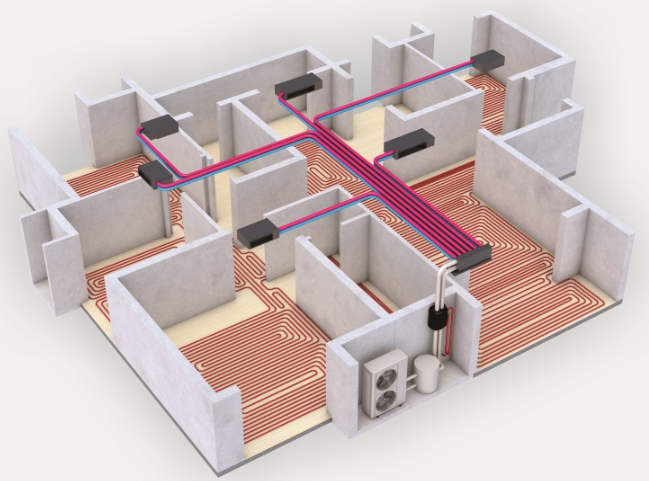13 ways to save energy in HVAC systems
2022-12-25.
HVAC systems consist of the cooling/heat source side, the cooling/heat transmission and distribution side, and the end-use side, so energy savings revolve around these three major components in at least 13 ways.
Energy saving on the cooling/heating source side of the HVAC system
In the air conditioning system, the energy-consuming equipment on the source side is mainly the refrigeration host and the heat pump unit. Among them, the refrigeration host needs to be matched with perfect control and regulation means; heat pump units, on the other hand, can be used in combination with renewable energy and clean energy to achieve energy saving and emission reduction. The following are six ways to save energy on the source side.

Under a certain load rate, try to run more refrigeration units with the highest efficiency, when the energy-saving benefits are not only obvious, but also to provide higher cooling capacity at a certain input power.
The COP value is measured to allow the refrigeration unit to operate in the high efficiency range.
Flexible setting of the chilled water supply temperature according to the cooling load or outdoor climate parameters.
Depending on the weather conditions, lower the cooling water return temperature, which is usually about 2°C higher than the outdoor wet bulb temperature.
Heat recovery and reuse of the superheated portion of the compressor discharge gas.
Recovery and reuse of all condensing heat from refrigeration and air conditioning units.
Energy saving in the cooling/heat transmission and distribution system of HVAC systems
The transmission and distribution system connects the source side and the use side, and transmits the cooling/heating source to the end equipment through the transmission equipment (pumps), and then provides cooling/heating to the room and the air conditioning service area through the operation of each end equipment. The following are 3 ways to save energy in the transmission and distribution system.
Improve the operation performance of the pump equipment itself to improve the overall delivery efficiency of the water system.
Make structural adjustments to the water system, such as using a primary pump system, secondary pump system, fixed water flow or variable water flow for building characteristics.
Add intelligent control means to allow the water system to respond flexibly to changes in cooling/heating.
Energy saving on the end-use side of the HVAC system
Generally speaking, between the end-use system of HVAC system and the transmission and distribution system, cold/heat is supplied to the area requiring air conditioning at the end after heat exchange through a cold/heat transport carrier (generally a fan). The characteristics of the end system are: wide distribution, many devices, and strong dependence on the use characteristics of the end. The following are four ways to save energy on the use side.
Improve the efficiency of the end air conditioning equipment (fan), such as full replacement of the fan, impeller replacement or inverter modification, to achieve energy saving.
Energy-saving renovation and optimal control of the end air conditioning system, one important aspect of which is to effectively control the intake of fresh air in the room, preferably using intelligent intelligent control means.
Adopt heat recovery technology, such as installing air heat exchangers, or using exhaust air heat recovery devices.
The use of variable air volume air conditioning (VAV) systems, which automatically adjust the impact of the outdoor environment on indoor temperature and humidity by changing the air volume.





